Simulation Standard Technical Journal
A Journal for Process and Device Engineers
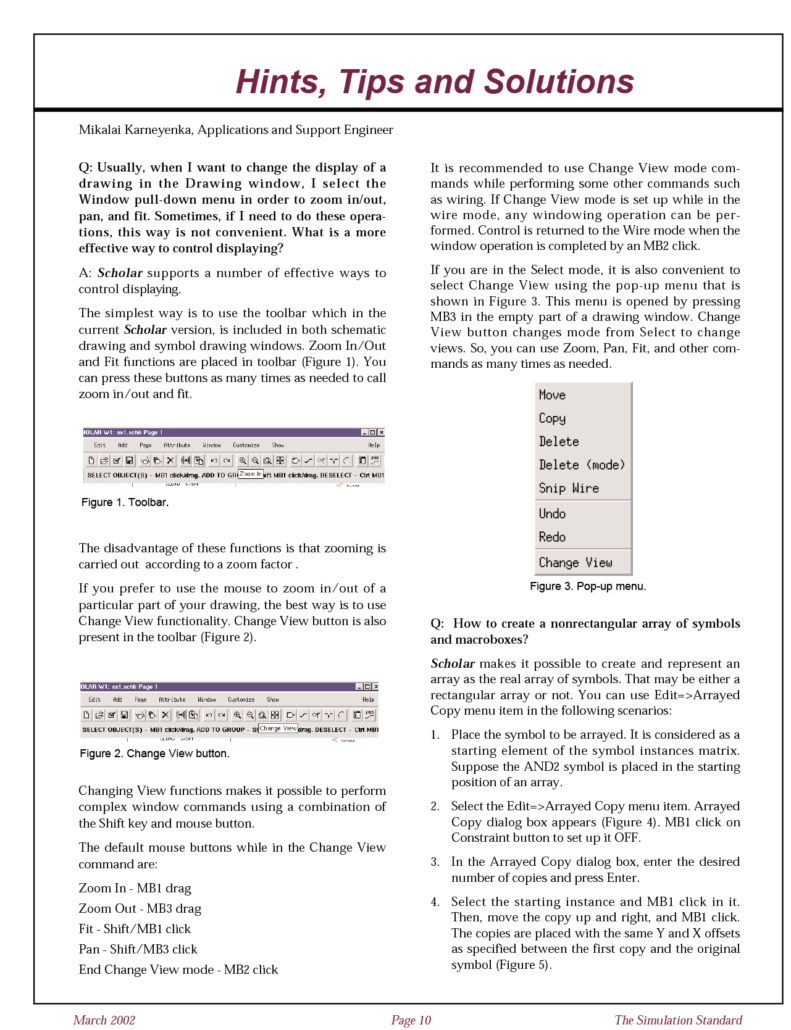
Hints, Tips, and Solutions March 2000
Q: Usually, when I want to change the display of a drawing in the Drawing window, I select the Window pull-down menu in order to zoom in/out, pan, and fit. Sometimes, if I need to do these operations, this way is not convenient. What is a more effective way to control displaying?
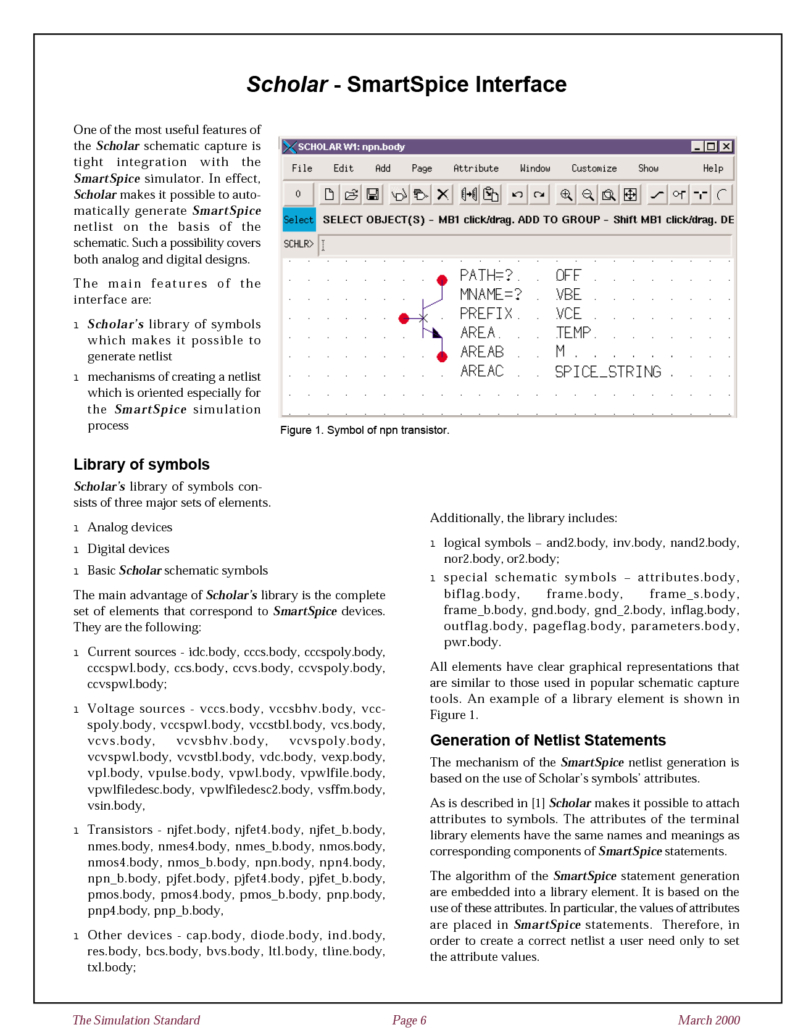
Scholar – SmartSpice Interface
One of the most useful features of the Scholar schematic capture is tight integration with the SmartSpice simulator. In effect, Scholar makes it possible to automatically generate SmartSpice netlist on the basis of the schematic. Such a possibility covers both analog and digital designs.
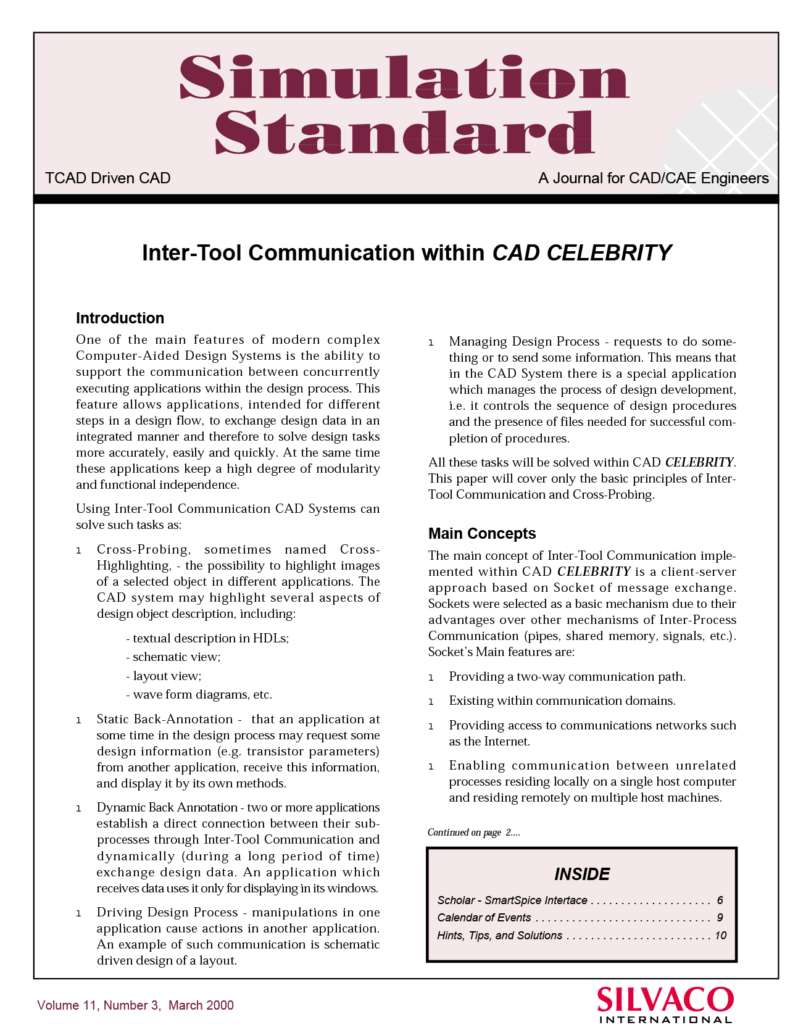
Inter-Tool Communication Within CAD CELEBRITY
One of the main features of modern complex Computer-Aided Design Systems is the ability to support the communication between concurrently executing applications within the design process. This feature allows applications, intended for different steps in a design flow, to exchange design data in an integrated manner and therefore to solve design tasks more accurately, easily and quickly.
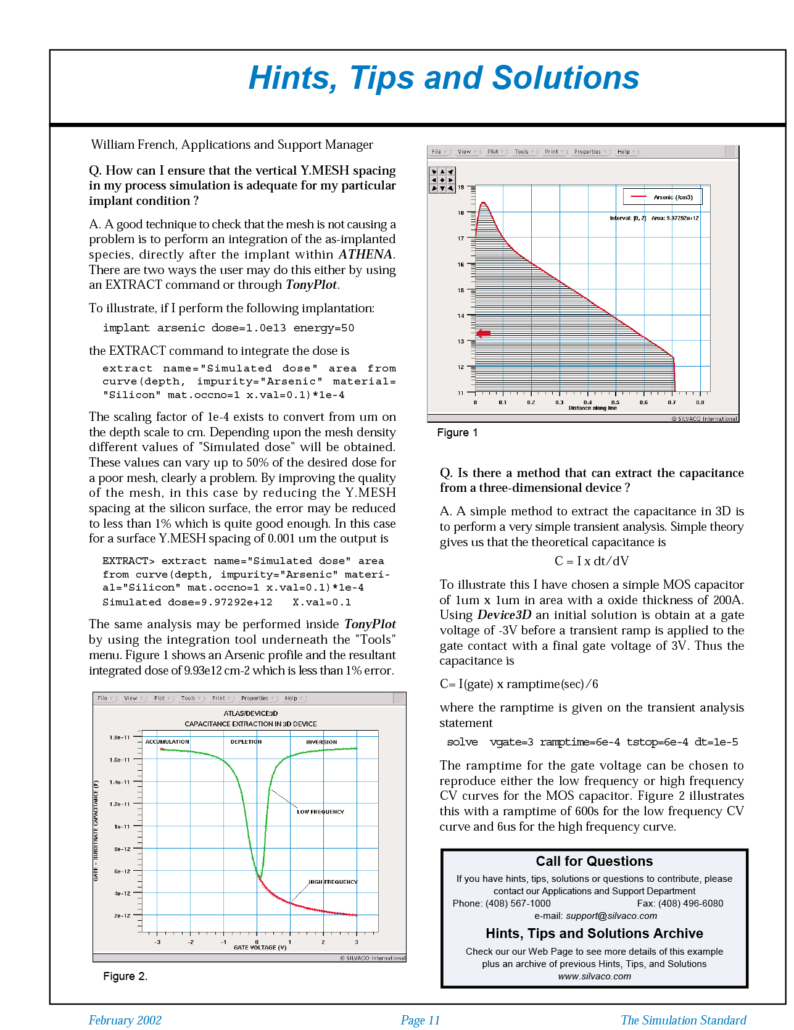
Hints, Tips, and Solutions February 2000
Q. How can I ensure that the vertical Y.MESH spacing in my process simulation is adequate for my particular implant condition? A. A good technique to check that the mesh is not causing a problem is to perform an integration of the as-implanted species, directly after the implant within ATHENA.
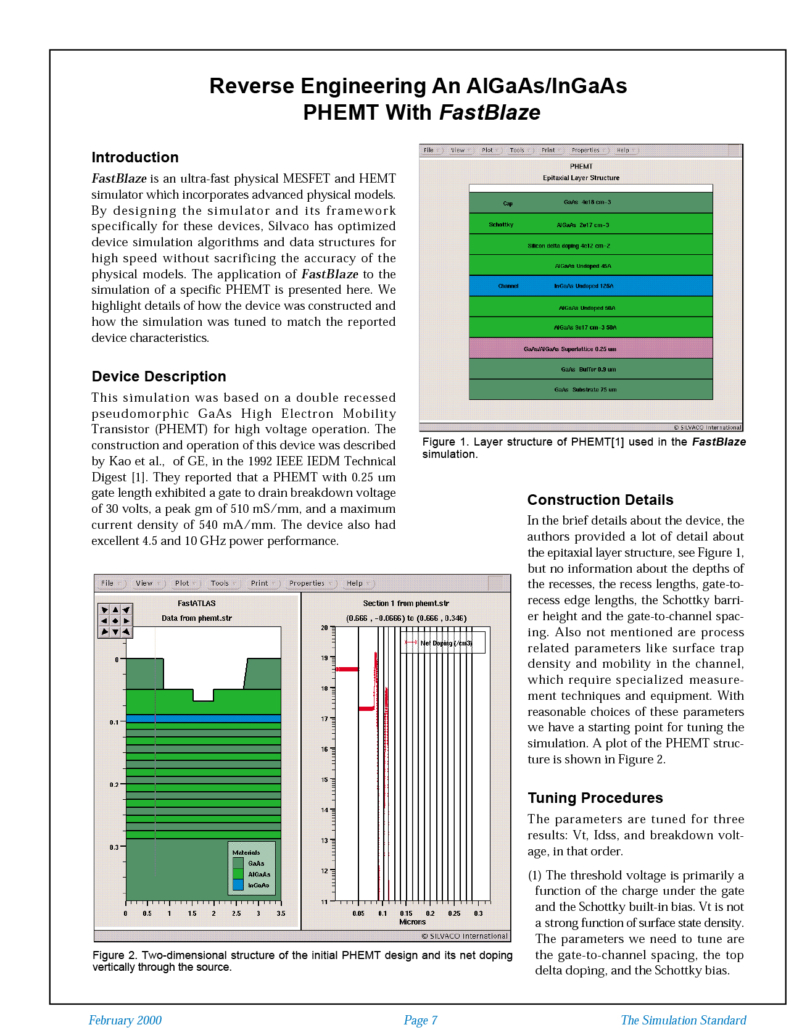
Reverse Engineering An AlGaAs/InGaAs PHEMT With FastBlaze
FastBlaze is an ultra-fast physical MESFET and HEMT simulator which incorporates advanced physical models. By designing the simulator and its framework specifically for these devices, Silvaco has optimized device simulation algorithms and data structures for high speed without sacrificing the accuracy of the physical models.
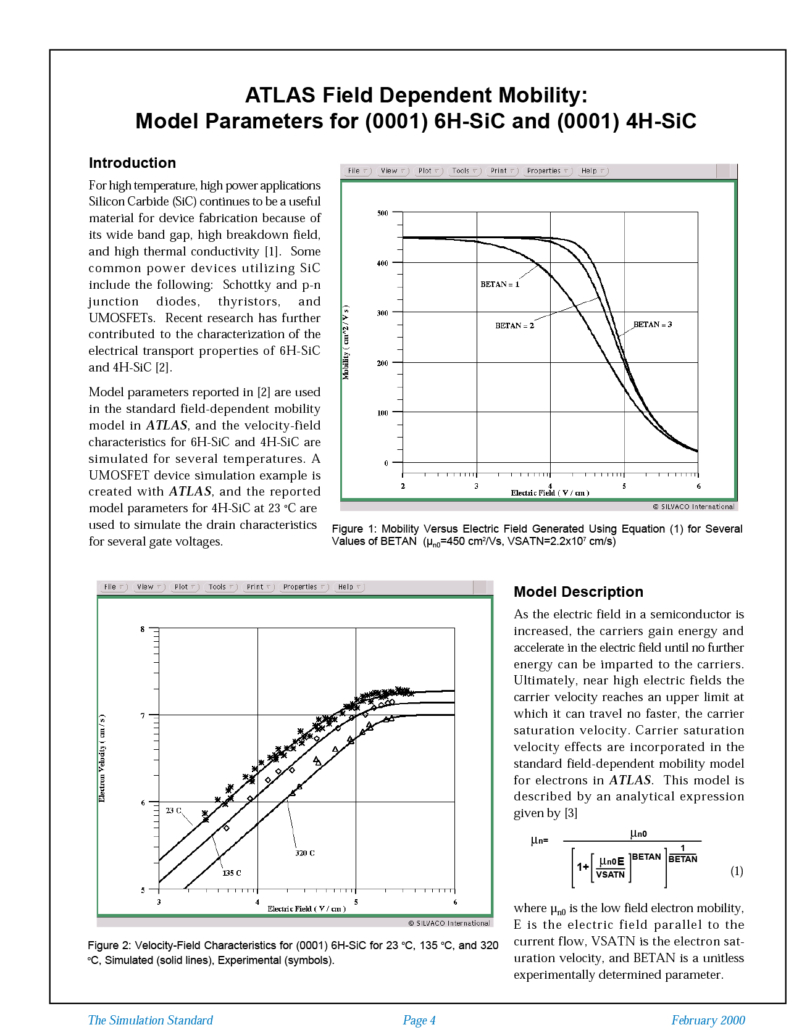
ATLAS Field Dependent Mobility: Model Parameters for (0001) 6H-SiC and (0001) 4H-SiC
For high temperature, high power applications Silicon Carbide (SiC) continues to be a useful material for device fabrication because of its wide band gap, high breakdown field, and high thermal conductivity [1]. Some common power devices utilizing SiC include the following: Schottky and p-n junction diodes, thyristors, and UMOSFETs. Recent research has further contributed to the characterization of the electrical transport properties of 6H-SiC and 4H-SiC [2].

